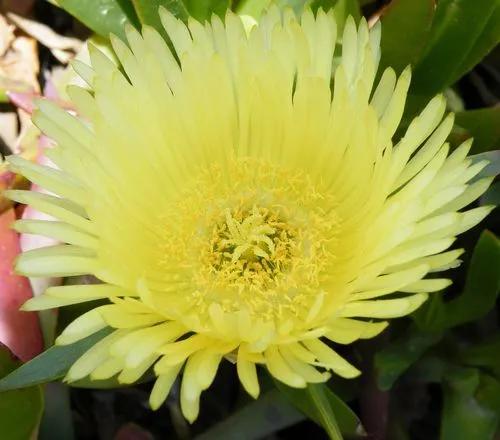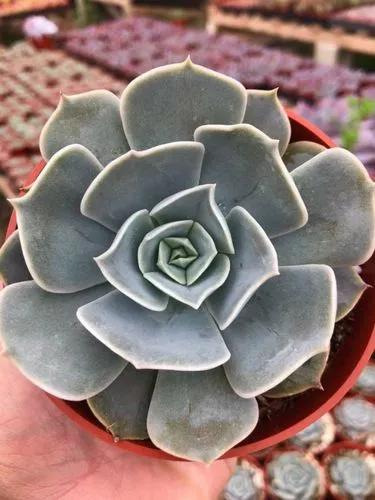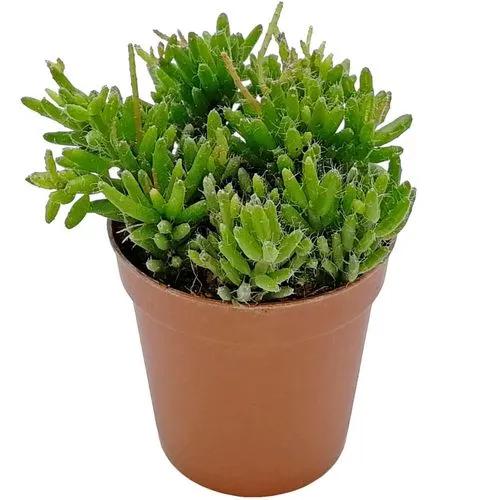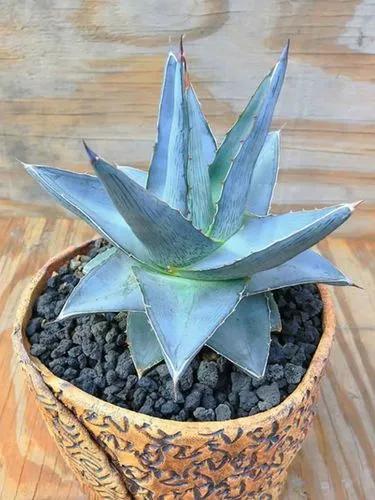Corpuscularia lehmannii is a compact succulent with grey, fat but angular leaves, should give quite showy yellow-translucent flowers without too much of a struggle. In the wild, it grows on outcrops in karroid vegetation, also in crevices of rocks.
Corpuscularia lehmannii Care
Delosperma lehmannii



Delosperma lehmannii is a densely leafy perennial plant forming cushion with a tap-root and some additional adventitious roots on sprawling, prostrate stems. All parts hairless. It has two kinds of shoots: long, ascending flower-bearing shoots with visible internodes and later numerous decumbent short shoots. The leaves are two-edged, 3-angled. Leaves on long shoots are to 4 cm long (mostly 20-25 mm long) and 8-10 mm broad and distant, keel oblique at first, tapping evenly towards the acute apex from above, more abruptly so from the side, each leaf with a developed 2-leaved short shoot in its axil, glaucous, not papillose. On short shoots, the leaves are ovate to almost globose and nearly imbricate, 12-16 mm long, 6-8 mm broad and thick.
How to Care for the Plant

Water

Watering corpuscularia lehmannii "ice plant" has typical watering needs for a succulent. it's best to use the "soak and dry" method, and allow the soil to dry out completely between waterings. it can be sensitive to under watering, but be careful not to over-water as it can lead to root rot.

Pruning

Get rid of damaged leaves and stems. This is important because damaged leaves and stems can actually be an energy drain on your plant. By removing those dead parts, you're taking some of that work off your plant’s plate and allowing it to divert its energy into healthy leaves and new growth!

Fertilizer

Liquid fertilizers are applied more frequently, bi-weekly or monthly, for example. Granular products are used less frequently, perhaps once every month or two. Slow-release houseplant fertilizers break down slowly and release their nutrients in small amounts, over a longer period of time. A single application of most of these products lasts for three to four months.

Sunlight

Medium light/Partly shaded – This is where the plant gets some morning sun or some afternoon sun. Morning sun is less intense than afternoon sun, so putting your plants a few meters in from an East facing window works for maximum sun while reducing the risk of burning.

Soil

The ideal blend of soil for plant growth is called loam. Often referred to as topsoil or black dirt by landscape companies, loam is a mixture of sand, clay, and silt.

Temperature

Protect from frost to prevent scarring. It requires a minimum temperature of about 5°C, but will take a light frost and is hardy down to -5°C for short periods if it is in dry soil.

Container

Here’s a handy guideline: increase pot size by 2.5-5 cm (1 to 2 inches) in diameter for plants that are growing in pots 25.4 cm (10 inches) in diameter or less. For larger plants, those growing in pots greater than 10 inches in diameter, increase the pot size by 5 or 7.62 cm (2 or 3 inches) in diameter.

Popularity

2,906 people already have this plant 622 people have added this plant to their wishlists
Discover more plants with the list below
Popular articles






